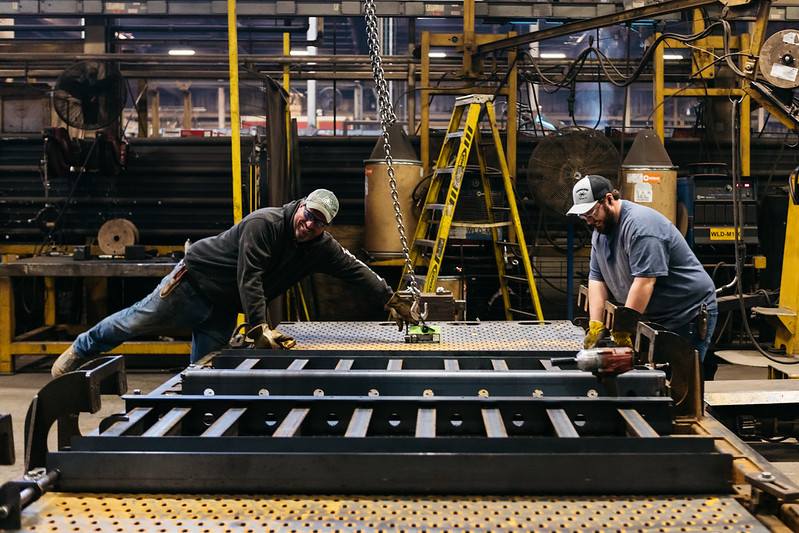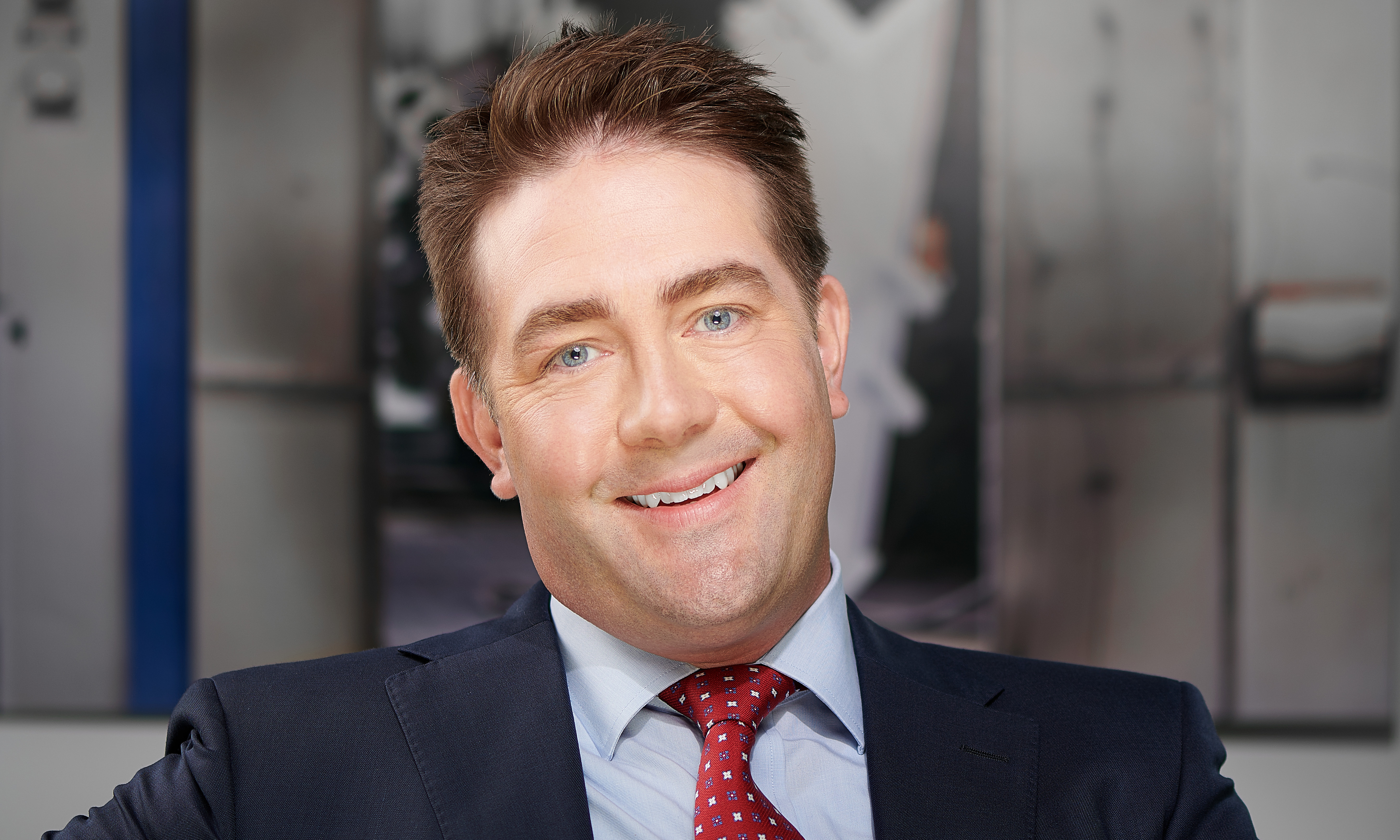AEM recognizes that manufacturers and their supply chains must partner to help achieve and support a more sustainable future for our industry.
Given the pace of change, it can be daunting to try and figure out how to get started or which steps to take to evolve and become a more sustainable organization. To help its members navigate their individual sustainability journeys, AEM has developed an equipment industry Sustainability Toolkit. The toolkit, which provides a variety of tools and resources, is part of the association’s ongoing commitment to increasing education and action around sustainability.
“The world of sustainability is changing rapidly and it’s being driven by several factors, including regulation, investment and corporate initiative,” said Kim Noe, program manager of sustainability at John Deere and Chair of the AEM’s Sustainability Council.
One of the tools in AEM’s Sustainability Toolkit is a Maturity Model Assessment. By working through the assessment, a company can:
- Determine its current level of advancement in sustainability
- Develop an action plan to continue maturing
- Engage resources in the toolkit to become more knowledgeable about sustainability and allow for better implementation of action plans
Completing the Sustainability Maturity Model Assessment is the crucial first step toward advancing sustainability within an equipment manufacturing company, as well as the entire industry.
“The Maturity Model was developed by three manufacturers—CNH Industrial, Cummins and John Deere—with the goal of helping others do faster what the three of us had to learn to do over a decade,” said Noe. The hope is that other companies can advance along the sustainability curve in as few as three to five years.
“Anyone in a sustainability role today is going through the same challenges everyone goes through,” said Karen Cecil, director of global environmental sustainability at Cummins and the first AEM Sustainability Council Chair. Cecil faced those challenges 10-plus years ago when Cummins hired her to develop the company’s sustainability strategy. “The company was doing great work back then, and employees were passionate about their particular work. But we didn’t have a comprehensive strategy to bring it all together."
Back then, Cecil said the role of a sustainability strategist was made even more difficult because there wasn’t a lot of information on sustainability yet, or at least information you could validate. Today, it’s the opposite. There is almost too much information, which can overwhelm a person trying to set strategy and determine how to move forward.
“This is why I’m really excited about the Sustainability Maturity Model,” Cecil said. “You don’t have to try and compare yourself to a Cummins, John Deere or CNH—especially if you’re just starting out. But depending on where you want to go, the Sustainability Maturity Model will tell you how to get there. And because it’s a tool that has been created by seasoned sustainability leaders, I’m also hopeful it will help AEM members gain the support of their company leaders. If this tool helps AEM members go further and faster down their sustainability pathway, that would make my day.”
“It is really important for the entire supply chain to grow in sustainability together,” added Annalisa Citterio, head of sustainability at Iveco Group, who was also a member of that first AEM Sustainability Council. (Iveco Group separated from CNH Industrial in 2022. Today, FPT Industrial, its brand specialized in powertrain solutions is still a member of AEM.) “Larger companies are being driven by their investors and customers. Larger companies are then asking their suppliers to become aligned in the same principles of sustainability. The new Sustainability Maturity Model Assessment helps each company rally around sustainability so they can get to where they need to be for the entire supply chain to reach our goals.”
How the maturity model was developed
The AEM Sustainability Council was created roughly five years ago to initially determine if the equipment industry should even be doing something collectively with sustainability. It didn’t take long to determine that the answer was “Yes.” From there, the objective became identifying best practices to share among all AEM members.
As time went on, the council members came to the realize they shared the same challenges with sustainability. “We also realized there are different levels of sustainability maturity,” Citterio said. Large companies often have individuals and teams that oversee sustainability. Smaller companies often have individuals who are solely focused on regulatory compliance. The Sustainability Council recognized the need to create a common way to phase the sustainability path for all AEM members, regardless of how advanced they were at the time.”
** Click on the image at right to view the Sustainability Maturity Model**
In 2020, the Sustainability Council began building the framework for a Sustainability Maturity Model. EHS (environmental, health and safety) seemed like a logical place to start, since it was common ground for most AEM members. The team continued to build out the assessment from there, complete with recommended action items and resources to help companies continue improving and advancing along the maturity curve.
How the assessment helps companies jumpstart sustainability
The Sustainability Maturity Model Assessment identifies key attributes that help define where a company is in its sustainability evolution:
- Motivation
- Boundaries
- Accountability
- Ownership
- External reporting
- Topics
- Actions and tools
- ISO Standards
Those attributes are then applied to the four phases of sustainability maturity:
- Compliance – fulfilling basic regulatory requirements
- Efficiency – striving to do more with less
- Leadership – going beyond environment and into social and governance; also looking to influence others such as suppliers and customers
- Purpose – the organization is now as concerned about making a positive environmental and social impact as it is about making money
Once they begin going through the different attributes in the model, companies can determine where they are on the maturity curve and what they need to do to continue advancing down the sustainability path.
For example, when looking at the boundaries attribute, a company still in the compliance phase is focused on its own facilities and operation. When looking to advance to the efficiency phase, the company would begin looking externally to surrounding communities such as suppliers. Then, when advancing to the leadership phase, a company’s boundaries would include all surrounding communities including suppliers, customers and others.
As another example, when looking at the external reporting attribute, a company in the compliance phase is passively responding to informational requests from investors, customers and Rankers & Raters. When looking to advance to the efficiency phase, reporting would become more transparent and proactive, and would also come to include reporting to organizations such as the Carbon Disclosure Project and the Global Reporting Initiative. When maturing to the leadership phase, the transparent reporting continues to expand. Proactive dialogue with investors also begins taking place.
“The assessment helps you identify stepping stones, as opposed to huge leaps where you’re not really sure what you’re getting into,” Noe said.
Ready to take the next step?
An AEM member’s first action is a visit to the Sustainability Toolkit webpage. Once logged in, click on the “assessments” tab on the left-hand side. From there organizations want to start with the Sustainability Maturity Model Assessment to begin taking stock of where their respective company is on the path to sustainability.
Noe said it’s also important to identify whom in the company will be part of this effort. For companies that are early in the maturity phase, EHS professionals are important to include. Smaller companies can also benefit from including their operations managers. “They’re the ones who understand the types of resources used within your manufacturing facility,” Noe said.
It’s also important to make sure senior leadership understands what you are undertaking, as well as what AEM and the entire industry are trying to accomplish.
“If you don’t have buy-in from the top, your job as it relates to sustainability becomes immensely more difficult,” Noe said.
“It’s also important to be curious, and never be afraid,” she continued. “After completing the assessment, even if you don’t feel like you scored very high, don’t be discouraged. Getting started is the most important step.”
AEM is committed to increasing education, adoption and action around sustainability, particularly within the supply chain. As part of that commitment, the association and its member-driven Sustainability Council have established three goals to drive their efforts for the remainder of 2023. The goals – building alignment, growing supply chain success and powering positive sustainability perception – will help AEM and its Sustainability Council spark ideas to set sustainability priorities for equipment manufacturers and provide a framework that supports best practices for a more viable world. Learn more at aem.org/sustainability.
For more AEM member perspectives, subscribe to the AEM Industry Advisor.





